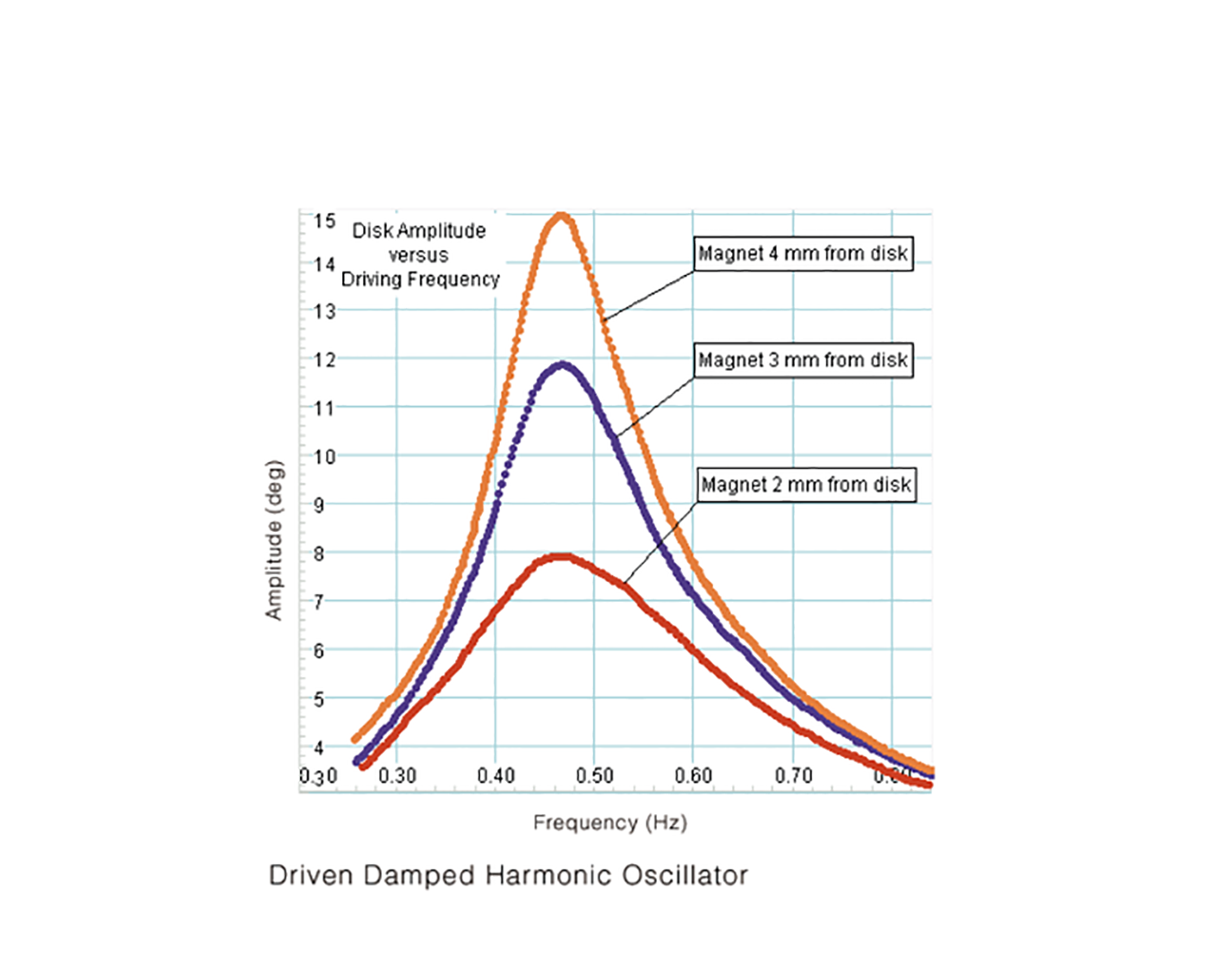Description
In this experiment, the resonance of a driven damped harmonic oscillator is examined by plotting the oscillation amplitude vs. frequency for various amounts of damping.
The oscillator consists of an aluminum disk with a pulley connected to two springs by a string. The angular positions and velocities of the disk and the driver are recorded as a function of time using two Rotary Motion Sensors. The amplitude of the oscillation is plotted vs. the driving frequency for different amounts of magnetic damping. Increased damping is provided by moving an adjustable magnet closer to the aluminum disk.
PASCO Advantage: The combination of PASCO Capstone software and the 850 Universal Interface has the power to sweep through the driver frequencies and the capability to plot the amplitude vs. the driver frequency in real time.
Concepts
- Resonance curves for an oscillator: amplitude vs. frequency
- Resonant frequency
- Period of a pendulum
- Effect of magnetic damping on shape of resonance curve
- Phase difference between oscillator and driver at low, resonant, and high frequencies
Experiments
What’s Included
- 2x PASPORT Rotary Motion Sensor (PS-2120A)
- 1x Chaos/Driven Harmonic Accessory (CI-6689A)
- 1x Large Rod Base (ME-8735)
- 1x 45 cm Stainless Steel Rod (ME-8736)
- 1x Mechanical Oscillator/Driver (ME-8750)
- 2x 120 cm Stainless Steel Rod (ME-8741)
- 1x Braided Physics String (SE-8050)
- 2x Multi-Clamp (ME-9507)
Software Required
This product requires PASCO software for data collection and analysis. We recommend the following option(s). For more information on which is right for your classroom, see our Software Comparison: SPARKvue vs. Capstone »
Interface Required
This product requires a PASCO Interface to connect to your computer or device. We recommend the following option(s). For a breakdown of features, capabilities, and additional options, see our Interface Comparison Guide »
Required Accessories
- Hooked Mass Set (SE-8759)
- Digital Calipers (SE-8710)


